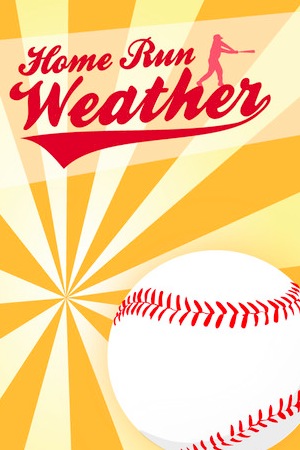
It has long been contemplated that weather conditions have an effect on the distance a baseball can travel. More home runs are seemingly hit on hot days or on days with the wind blowing out.
Who can forget the many games at Wrigley Field that have featured numerous home runs as the wind raced out towards Waveland Avenue? Mike Schmidt cranked four home runs on just such a day at Wrigley Field in April of 1976. That game featured nine home runs and 34 total runs and a wind blowing out strongly ahead of a cold front. Not surprisingly, most of the games with four home runs hit by an individual player have occurred with temperatures of at least 80 degrees or with a strong wind blowing out. Conversely, most people would agree that fewer home runs are hit on cold days or with the wind blowing in. Candlestick Park in San Francisco frequently offered such weather.
The distance that a baseball travels is indeed impacted by atmospheric conditions. In general, the less dense the air is, the farther a baseball can travel. Hot air is less dense than cold air and higher altitude air is less dense than air at sea level. It is for this reason that so many home runs were hit in Colorado before the humidor was put into place. Humidity is crucial as well. Air with higher humidity is actually less dense than drier air. This may be contrary to perception and many baseball fans have no doubt heard baseball announcers incorrectly use the phrase “heavy humid air” on a hot summer night.
Utilizing sophisticated math and physics, meteorologists and software engineers at The SI Organization, Inc. have investigated this topic, which mixes science and baseball. And the results of their efforts are now available in a real time baseball weather application, Home Run Weather 2012. Developed for the iPhone, iPad and Android devices, the app relates live temperature, atmospheric pressure, humidity, field orientation, wind direction, wind speed and the drag coefficient of a baseball to the user to determine if local weather conditions, for any big league park, are favorable for home runs being hit. Twenty-four hour forecasts are available in addition to live weather.
Two approaches were combined to arrive at a “home run favorability” index, which the app displays on a scale of 0 to 10 (least-to-most favorable). The first approach was to analyze actual weather conditions and home run data over the past four seasons (Citizens Bank Park was chosen as the venue for this study). The second approach uses a theoretical, NASA-style, physics-based model that determines the distance a ball will travel based on the temperature, relative humidity and atmospheric pressure.
The Citizens Bank Park study yielded some interesting, but perhaps not too surprising, findings. First, temperatures and dew points had a clear trend line relationship with home runs, as generally more home runs were hit in hot and humid air than colder, less-humid air. It was also found that 13-percent more home runs were hit when the wind was blowing out than other wind conditions. Additionally, 6-percent more home runs were hit in the daytime as compared to nighttime games.
The results produced by Home Run Weather 2012 have been quite encouraging. The low home run favorability index values (0-3) have had an average of 1.56 home runs per game so far this season. The moderate index values (4-7) have had an average of 1.78. And the high values (8- 10) have had an average of 2.48 home runs per game.
Whether you're a fan at the park who's interested in a home run forecast, a spirited fantasy owner or baseball analyst, Home Run Weather 2012 should provide some useful information and conversation material. For more details, visit The SI Weather website.
Paul Dorian is a Systems Engineer with The SI Organization, Inc. He received Bachelor of Science and Master of Science degrees in meteorology from Penn State University and has also worked as a Meteorologist for NASA.
